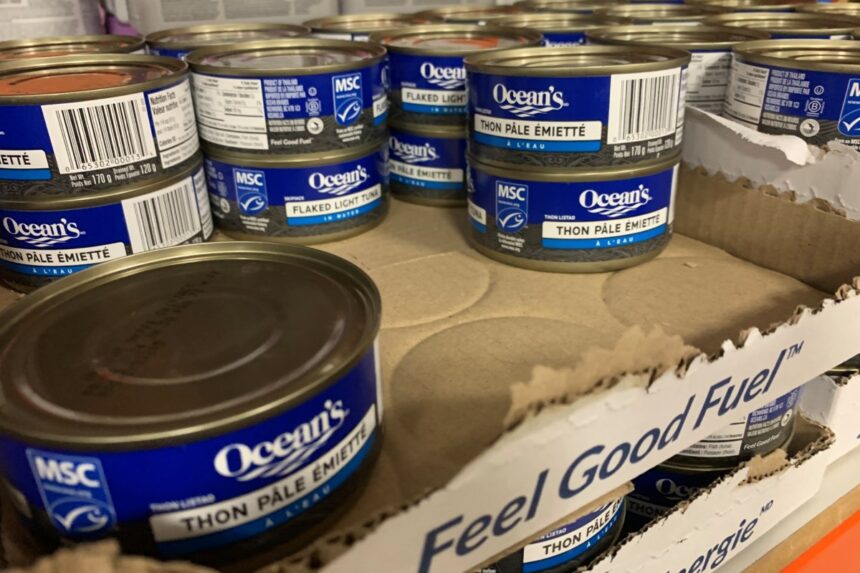As Simcoe County’s summer heat gives way to the crispness of early fall, a pressing issue continues to simmer in local council chambers. Last week, county councillors approved the reallocation of nearly $750,000 in unspent social services funds toward food security programs across the region.
The decision comes at a critical time. Food bank visits across Simcoe County have increased by 32% over the past year, according to data from Feed Ontario’s 2023 Hunger Report. Behind these numbers are families facing impossible choices between paying rent and putting food on the table.
“We’re seeing people who’ve never needed these services before,” says Jen Fisher, director of The Sharing Place Food Bank in Orillia. “Working families, seniors on fixed incomes – the demographic has completely shifted from what we saw even two years ago.”
The county’s move redirects funds originally allocated to homelessness prevention that went unused during the previous fiscal period. The reallocation includes $420,000 for immediate food security initiatives and $325,000 for outreach services targeting rural communities where transportation barriers often prevent access to centralized services.
County Warden Basil Clarke emphasized the temporary nature of the funding during council deliberations. “While this addresses an urgent need, we need sustainable solutions that address the root causes of food insecurity in our communities,” Clarke noted after the 24-5 vote approving the measure.
The redirection of funds wasn’t without controversy. Councillor Lynn Dollin from Innisfil questioned whether the money might be better invested in affordable housing initiatives, arguing that addressing housing instability would naturally improve food security outcomes.
“When a family spends 60 or 70 percent of their income on housing, what’s left for food?” Dollin asked during debate. “We’re treating symptoms rather than causes.”
Statistics Canada’s latest data shows the average rent for a two-bedroom apartment in Barrie, the county’s largest urban center, has increased 9.2% year-over-year, placing additional pressure on household budgets already stretched thin by food inflation that continues to outpace general inflation rates.
The approved funding will be distributed through existing community partners rather than creating new administrative structures. Organizations like the Simcoe County Food Collective and regional food banks will receive portions based on their service areas and demonstrated needs.
For those working on the front lines of hunger in the county, the timing couldn’t be more crucial. Donations typically dip during fall months before the holiday giving season begins, creating a vulnerable period for food support services.
“This bridge funding will help us maintain service levels during what’s traditionally our toughest season,” explains Mark Thompson, executive director of the Barrie Food Bank, where client visits have increased 46% since 2022. “But we’re also working with the county on longer-term strategies that address why so many working people can’t afford basic necessities.”
The allocation includes $125,000 specifically for mobile food services to reach communities like Elmvale, Coldwater, and other rural areas where transportation barriers often prevent residents from accessing centralized food banks. These mobile initiatives will launch by early November, just as winter weather makes transportation even more challenging for vulnerable residents.
County staff will report back to council quarterly on the program’s implementation and impact, with the first assessment scheduled for January 2025. The report will track not just how many people received assistance, but whether the outreach components successfully reached populations previously underserved by traditional food security programs.
The funding comes as the provincial government faces increasing pressure to address both food affordability and social assistance rates. Ontario Works benefits have remained largely stagnant for years, with a single person receiving a maximum of $733 monthly – an amount food security advocates argue is impossible to live on given current housing and food costs.
Councillor Barry Burton from Bradford West Gwillimbury, who supported the reallocation, pointed to broader systemic issues during council discussions. “Every level of government needs to recognize that our social safety net has significant holes,” Burton said. “We’re doing what we can locally, but this requires provincial and federal solutions too.”
Food inflation, while moderating from 2022-2023 peaks, continues to hit staple items hardest. The price of pasta has increased 22% since 2022, while bread costs have risen 18%, according to Statistics Canada’s Consumer Price Index data released last month.
For Janet Rodriguez, a single mother of two in Midland who recently began using food support services, the county’s funding decision offers some relief. “I work full-time, but after rent and utilities, there’s just not enough left,” she told me during a community meal program in Midland last week. “Having to ask for help with food was the hardest thing I’ve ever done.”
As the new funding rolls out across Simcoe County’s 16 municipalities, the question remains whether temporary measures can address what increasingly appears to be a structural problem. Food bank operators like Fisher note that emergency food was never designed to be a permanent solution to poverty.
“We’re grateful for the county’s support, but we can’t lose sight of the bigger picture,” Fisher says. “Food banks were supposed to be a temporary response to the recession in the 1980s. Forty years later, we’re seeing record numbers because the underlying issues of income inequality haven’t been addressed.”
Council has directed staff to prepare a more comprehensive food security strategy for the 2025 budget discussions, suggesting this reallocation may be just the beginning of a more systemic approach to hunger in Simcoe County.






